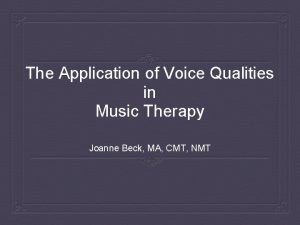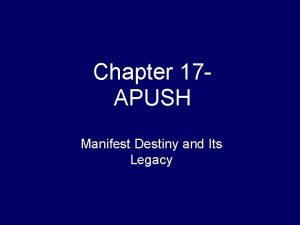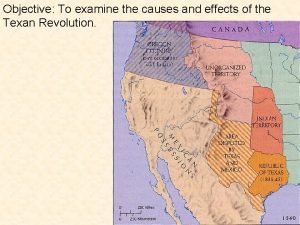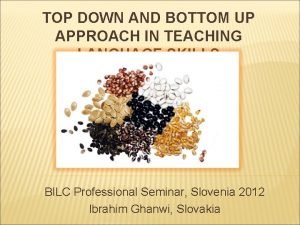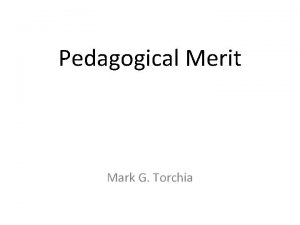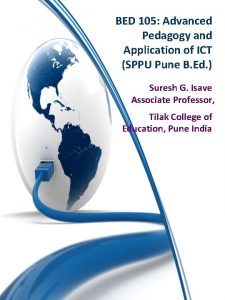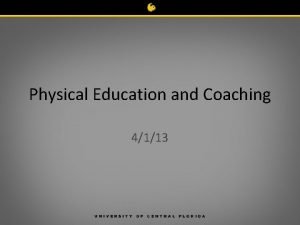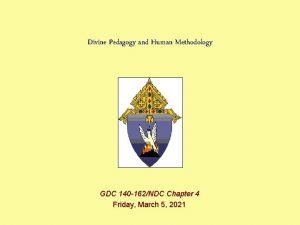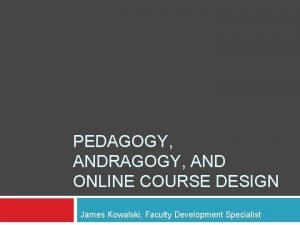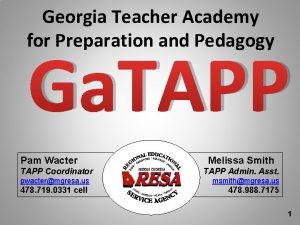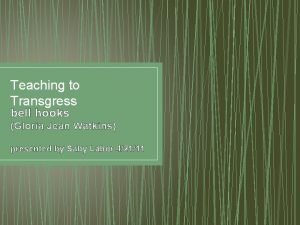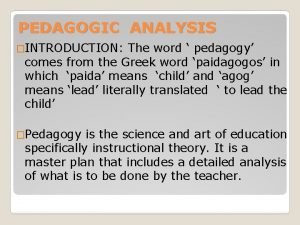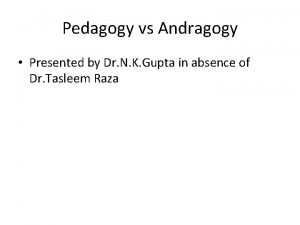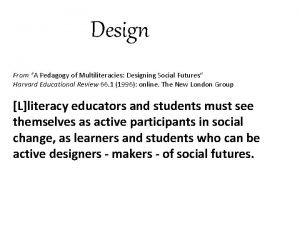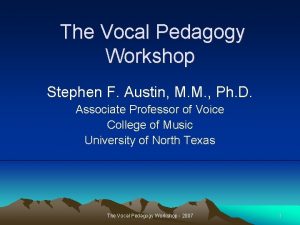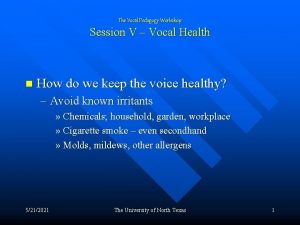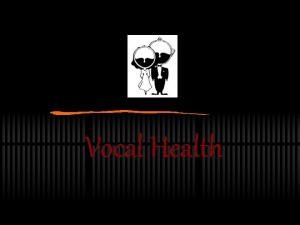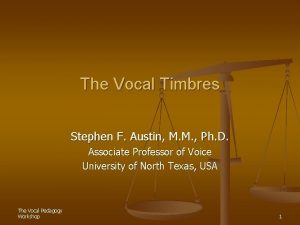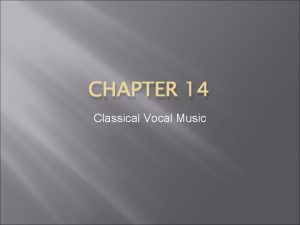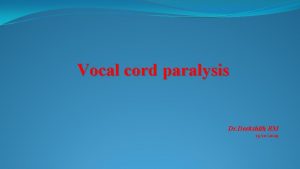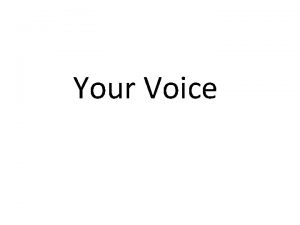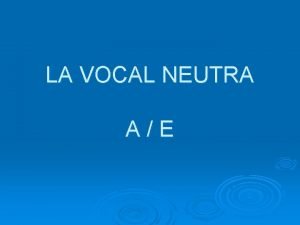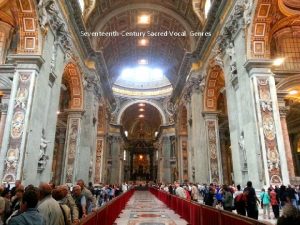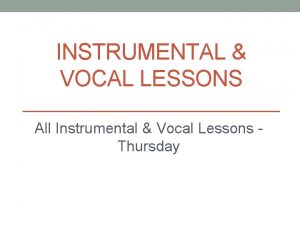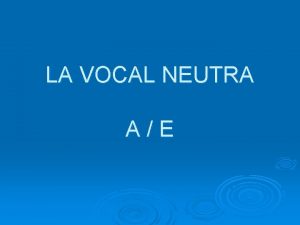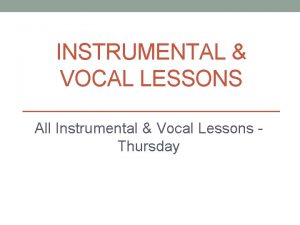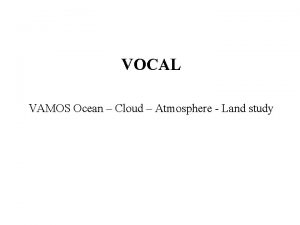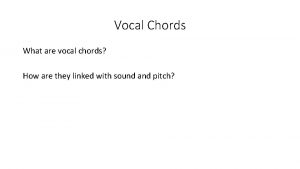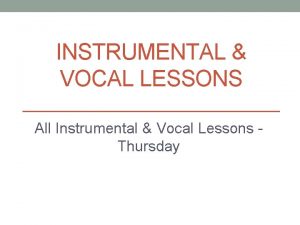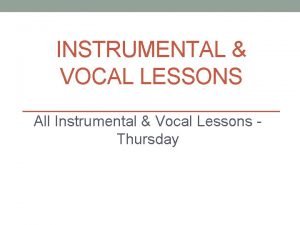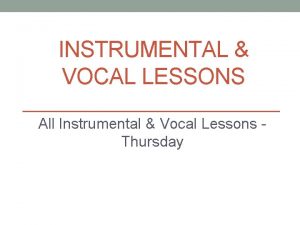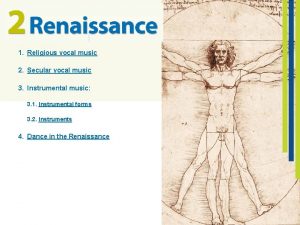The Vocal Pedagogy Workshop Stephen F Austin Associate





















- Slides: 21

The Vocal Pedagogy Workshop Stephen F Austin Associate Professor of Voice College of Music University of North Texas 10/7/2020 The Vocal Pedagogy Workshop 1

Introduction n To offer voice professionals and students a concise review of the vocal mechanism To present practical applications of this information To discuss the identification and development of the professional voice. 10/7/2020 The Vocal Pedagogy Workshop 2

Topics of Discussion n n n I. Breathing and support II. Phonation & Vocal tract acoustics III. Vocal registers IV. Vocal Tract Acoustics V. Special session: History and Pedagogy of the ‘open throat’ VI. Voice Care 10/7/2020 The Vocal Pedagogy Workshop 3

I. Breathing and support n n n All living things respire Air in the lungs powers the vibration of the vocal folds Breathing is a ‘natural’ process that singers must develop into a ‘supernatural’ skill 10/7/2020 The Vocal Pedagogy Workshop 4

10/7/2020 The Vocal Pedagogy Workshop 5

Mechanics of Respiration n Boyle’s Law – in a sealed space: n n PV = constant Pressure - Volume Breathing is a ‘torturous’ experience! Chest wall and diaphragm are the ‘moveable walls’ 10/7/2020 The Vocal Pedagogy Workshop 6

Structural Framework n Vertebral Column n n Rib Cage n n n 10/7/2020 34 vertebrae 7 ‘true’ 3 ‘false’ 2 ‘floating’ Pectoral Girdle Pelvic Girdle The Vocal Pedagogy Workshop 7

Respiratory Forces n Respiration depends upon both ‘active’ and ‘passive’ forces n n Active – requires a muscle to do work Passive – comes from physical properties of tissue and gravity 10/7/2020 The Vocal Pedagogy Workshop 8

10/7/2020 The Vocal Pedagogy Workshop 9

10/7/2020 The Vocal Pedagogy Workshop 10

10/7/2020 The Vocal Pedagogy Workshop 11

Inspiration - Active n Diaphragm n n 10/7/2020 Primary muscle of inspiration: Dome shaped Divides thorax from the abdomen Descends and increases volume of the thorax The Vocal Pedagogy Workshop 12

Inspiration - Active n Diaphragm n n 10/7/2020 Pressure decreases in lungs Air rushes in to fill the void Pressure in abdomen increases Abdominal wall expands The Vocal Pedagogy Workshop 13

Inspiration - Active n External Intercostals: n n n 10/7/2020 Between ribs ‘lifts’ the ribs Expands volume of the rib cage The Vocal Pedagogy Workshop 14

Inspiration: Active n n n Volume of the thorax is increased by the descent of the diaphragm and the lift of the external intercostals Pressure in the lungs decreases Air rushes in through the vocal tract to equalize the pressure 10/7/2020 The Vocal Pedagogy Workshop 15

Expiration: Passive n n n Gravity pulls down on the thorax. Volume decreases, pressure increases and results in air flow out. Elasticity Torque No muscular action necessary Not typical for singing 10/7/2020 The Vocal Pedagogy Workshop 16

Expiration: Active n n n Requires a muscular action Primary muscles are of the abdominal wall Reposition the diaphragm ‘Squeeze’ the thorax Both decrease volume and increase pressure in thorax Produces airflow through the larynx 10/7/2020 The Vocal Pedagogy Workshop 17

10/7/2020 The Vocal Pedagogy Workshop 18

Methods of ‘support’ n n n ‘Down and out’ ‘In and up’ ‘Appoggio’ ‘Back breathing’ Lower focus – ‘squeeze the dime’, ‘psoaz’ ‘Reptilian’ – through the skin! 10/7/2020 The Vocal Pedagogy Workshop 19

Summary n “I have seen some professional singers with heaving chests, some with protruding bellies, some with raised shoulders, and some with bouncing epigastrums, all of whom sang beautifully… I have also seen awkward postures that have not adversely affected good singing. ” 10/7/2020 The Vocal Pedagogy Workshop 20

Summary n “While good posture and good breathing methods are certainly important, especially in a singer’s early training, it is ultimately the way in which the breath is turned into a singing tone that is crucial. ” n 10/7/2020 James Stark, Bel Canto: A History of Vocal Pedagogy. The Vocal Pedagogy Workshop 21
 False and true vocal cords
False and true vocal cords What are the two vocal styles in singing in pakistan
What are the two vocal styles in singing in pakistan His accidency apush
His accidency apush Stephen austin
Stephen austin Example of equity pedagogy
Example of equity pedagogy Multiple intelligences test
Multiple intelligences test Pedagogy meaning
Pedagogy meaning Top down approach reading
Top down approach reading How to pronounce pedagogical
How to pronounce pedagogical Advanced pedagogy and application of ict
Advanced pedagogy and application of ict Sport pedagogy definition
Sport pedagogy definition Divine pedagogy
Divine pedagogy David kolb
David kolb Tapp program georgia
Tapp program georgia Diamond model social pedagogy
Diamond model social pedagogy Gloria jean watkins
Gloria jean watkins Gradual release of responsibility pedagogy
Gradual release of responsibility pedagogy Definition of pedagogical analysis
Definition of pedagogical analysis Humanising pedagogy meaning
Humanising pedagogy meaning Pedagogies meaning
Pedagogies meaning A pedagogy of multiliteracies designing social futures
A pedagogy of multiliteracies designing social futures What is gender responsive pedagogy
What is gender responsive pedagogy
